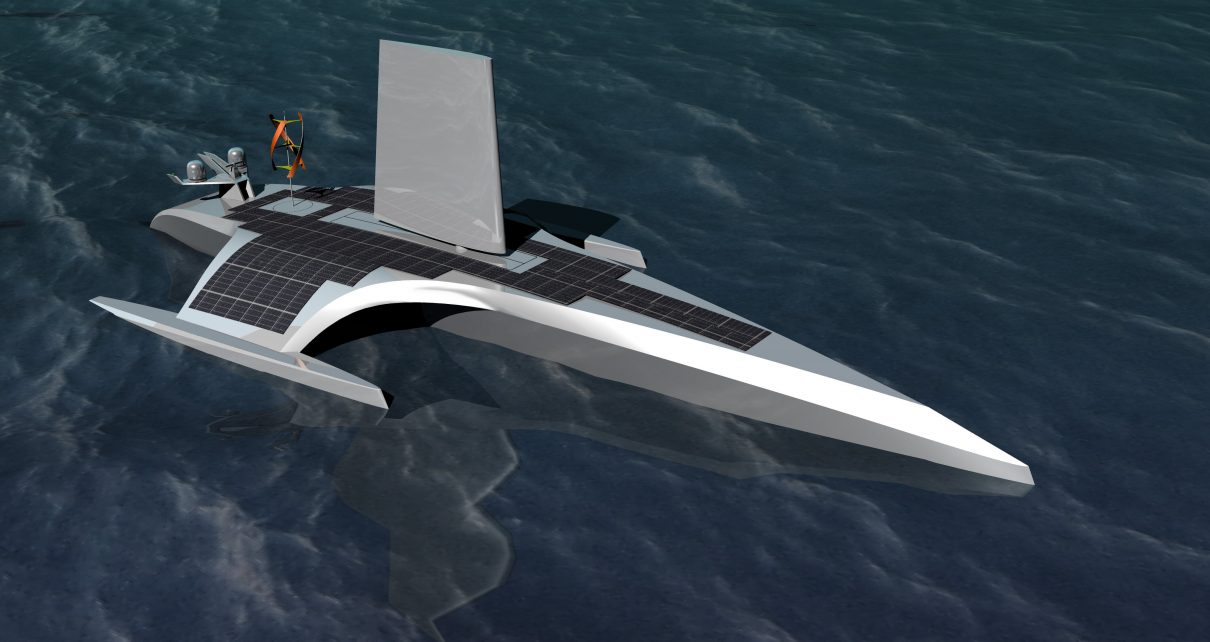Ships without sailors could keep humans out of harm’s way, and that possibility is not their only potential benefit. Without crews, shippers could save money normally spent on salaries, keep boats away from shore for longer and, without wasting room on accommodations, try more efficient designs that would emit less pollution. The autonomous shipping market is projected to grow from $90 billion today to more than $130 billion by 2030. But the technology remains in its early stages—particularly for large vessels designed to face the open ocean—which means testing is still vital. This year two very different projects will gamble on automated sea voyages.
Ocean Infinity, a seabed-exploration company based in both Austin, Tex., and Fareham, England, is pioneering the use of large, uncrewed survey ships with a fleet it calls the Armada. By the end of 2020 its 15 full-size commercial ships, ranging in length from 69 to 120 feet, will begin mapping subsea terrain and inspecting underwater infrastructure, such as telecommunications and wind farm cables, as well as oil and gas pipelines. Meanwhile the Chester, Conn.–based marine-research-and-exploration nonprofit ProMare and the technology company IBM are partnering to send a completely autonomous 49-foot-long trimaran (a boat with one main hull and two smaller outrigger hulls) across the Atlantic in September. The craft, dubbed the Mayflower Autonomous Ship (MAS), or Mayflower, will roughly retrace the 1620 voyage of the original Mayflower from Plymouth, England, to Plymouth, Mass.—a journey that will pit an autonomous vessel against potentially stormy seas.
The two tests represent different types of autonomy. In the Armada’s case, each ship will still require that humans remain in the loop. In the MAS’s plan, people will not be needed.
Remote Robots
Offshore maritime survey-and-inspection work is currently done by crewed vessels, ranging from small boats to ships of more than 250 feet. They gather data by towing radar, sonar and optical sensors behind them or by deploying remotely operated vehicles (ROVs) underwater. Survey craft typically trawl back and forth over a set area in a pattern known as “moving the lawn” to build up a picture of the seabed or infrastructure beneath the waves. Ocean Infinity wants to scan such regions in the same way—but without crews. It also plans to employ Armada vessels in pairs or groups instead of operating solo as crewed survey ships normally do. That way, says Dan Hook, managing director of the project at Ocean Infinity, “we can cover the area more quickly and get on to the next one.” To perform these scans, the Armada ships can deploy a variety of payloads, including underwater ROVs capable of gathering acoustic and visual data down to a depth of 20,000 feet.
The Armada will not perform these tasks entirely on its own. Professional mariners in control stations on land (either in the county of Hampshire in England or in Austin) will oversee the vessels 24/7, making them more like remotely piloted unmanned aerial vehicles than truly autonomous ships—but still with far fewer people involved than a fully crewed vessel. The system will rely on satellite communications, data links and onboard cameras, as well as preprogrammed mission plans.
The United Nations’ International Maritime Organization, which is conducting its own practice exercise for future autonomous shipping later this year, considers the Armada’s ships to be “supervised autonomy” vessels instead of completely independent ones. In addition to at-sea oversight, Ocean Infinity expects the ships will require onboard human pilots to navigate them in and out of ports when the fleet departs and returns to shore.
The system is set for an initial trial, with the first 10 Armada vessels scheduled to begin visiting several European and West African ports later this year, Hook says. This test run, which would expand the project’s range to North America and beyond once the rest of the ships are built, also gives Ocean Infinity a chance to assess what level of security its fleet requires. To protect its communication links, the company has invested in standard maritime cybersecurity, as well as additional detection systems to monitor for cyberintrusions, Hook says. Although pirates are not common in European waters, Ocean Infinity has also made concessions to physical security. The ships have lockable hatches and sloping sides that make their deck difficult to access. And an automated system called vessel self-awareness makes Armada ships avoid unknown craft. “We have a mode where the vehicle will stay away from any object,” Hook explains. “So the vessel can be programmed to edge away from piracy-type activity.”
Alone at Sea
In September the MAS—an uncrewed vessel powered by a combination of solar energy, diesel fuel and sails—will leave England for Massachusetts. “I thought we should take the inspiration of the Pilgrims’ departure from Plymouth and speak to the next 400 years of the maritime enterprise,” says Brett Phaneuf, a board member at ProMare.
This vision of ocean vessels’ automated future does not depend on human controllers, says Rob High, chief technology officer of IBM Edge Computing. The MAS will make its own decisions, independent of human input, by self-navigating with an IBM-developed artificial intelligence system called AI Captain. Though the ship will have satellite connectivity for much of its voyage, allowing people to check in, it will rely entirely on AI Captain when it goes through zones without communication links. The system employs onboard sensors, including radar, lidar and cameras, as well as a satellite-based marine location-tracking program. AI Captain uses this input to take in its surroundings and compares them to a database of more than one million nautical images. It relies on this information, along with standard maritime rules and sea conditions, to generate a risk map. This tool lets the robotic captain determine the best way to react to obstacles, weather and traffic. As necessary, it can make the boat change course, speed or power.
Despite the technology behind it, the MAS faces many obstacles—including a lack of the kind of human oversight that Armada vessels will have—on its two- to three-week journey. Phaneuf acknowledges that the ship’s success is not 100 percent guaranteed. “Everybody on the project gets nervous when I’m asked this question,” he jokes. “I say, ‘When the Pilgrims left Plymouth 400 years ago, they weren’t sure they were going to make it either.’”




